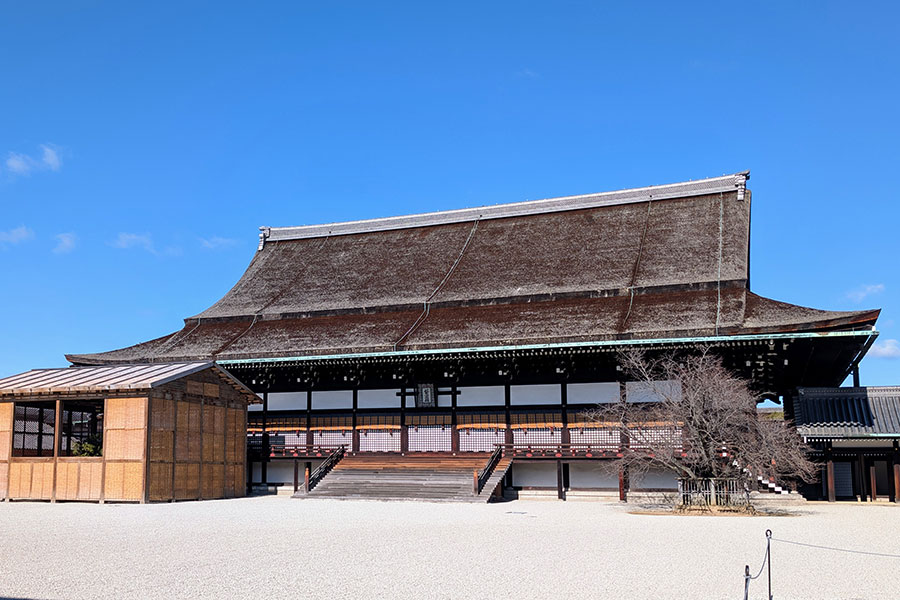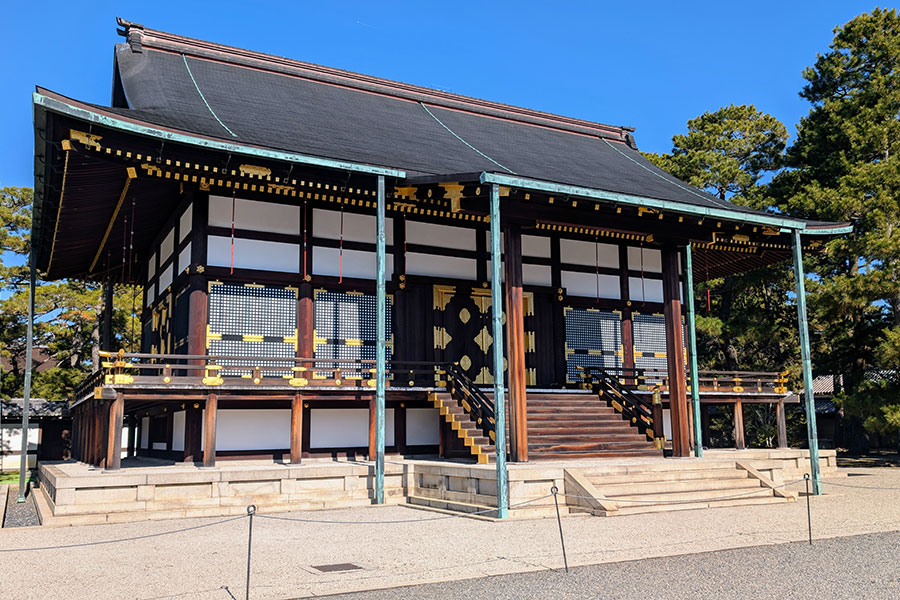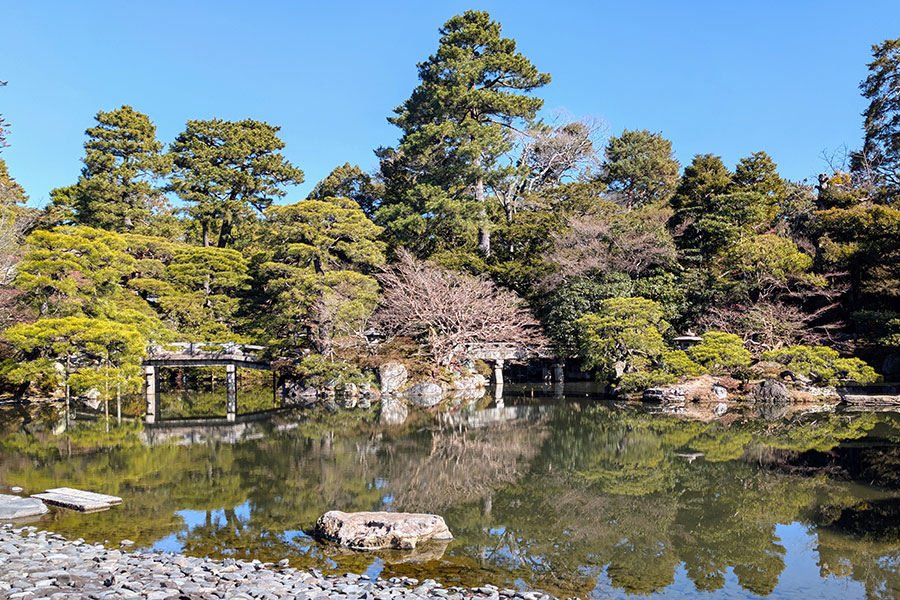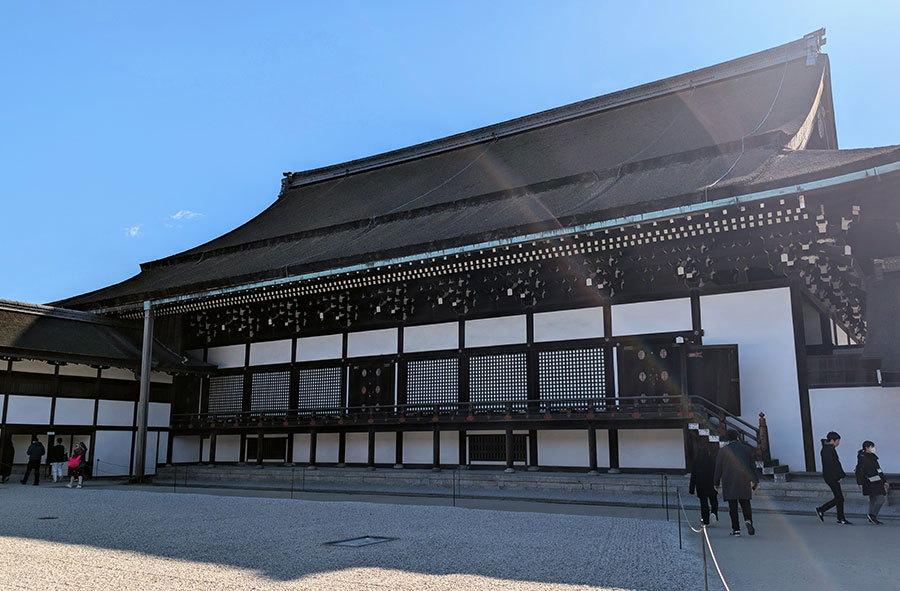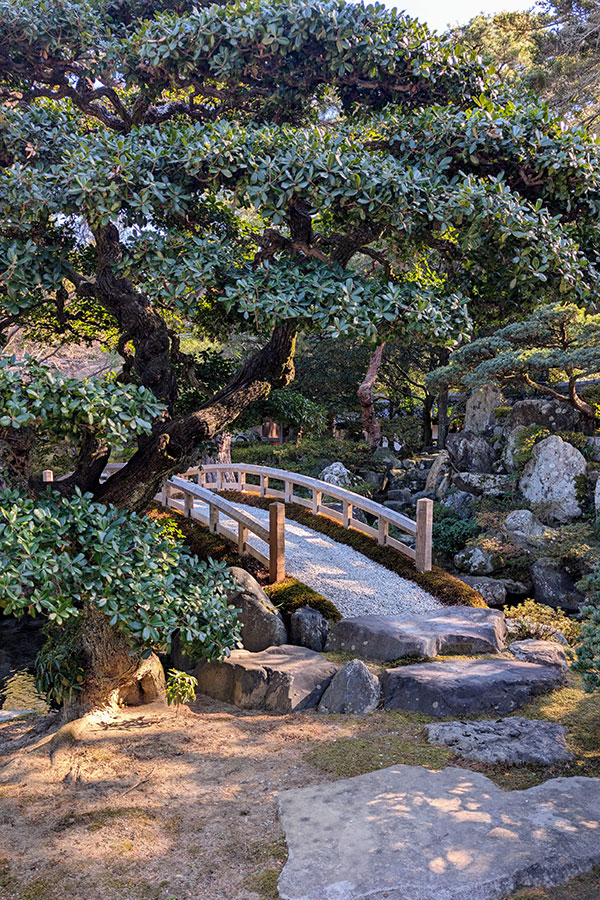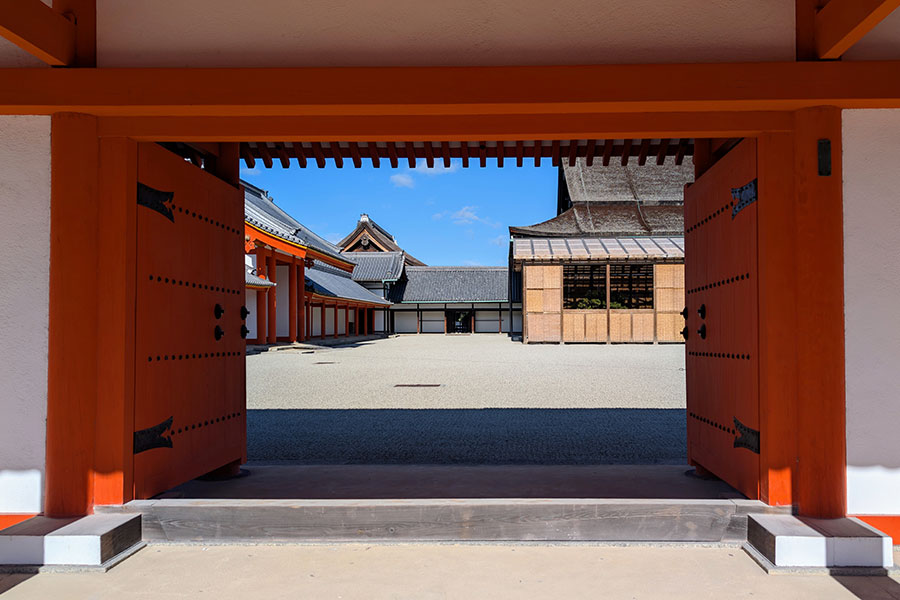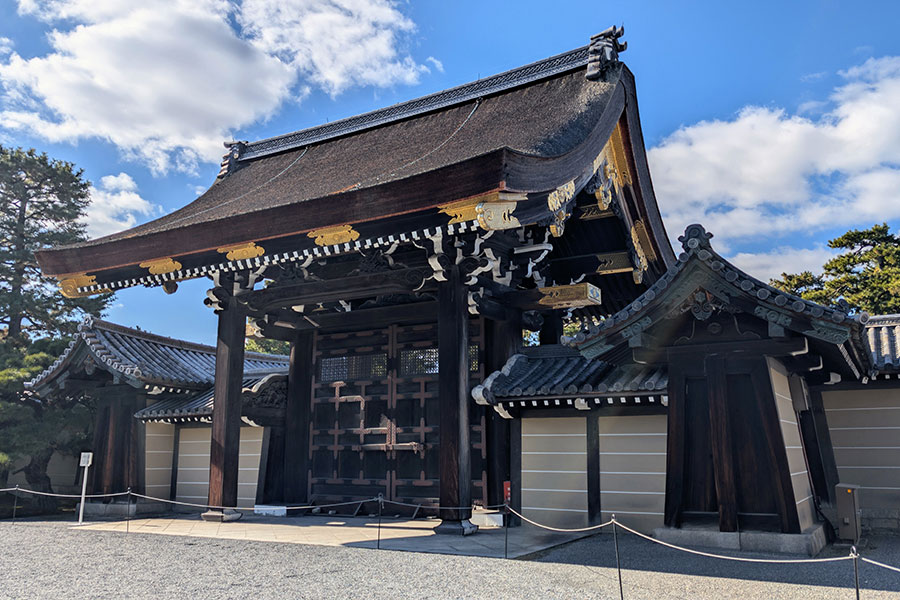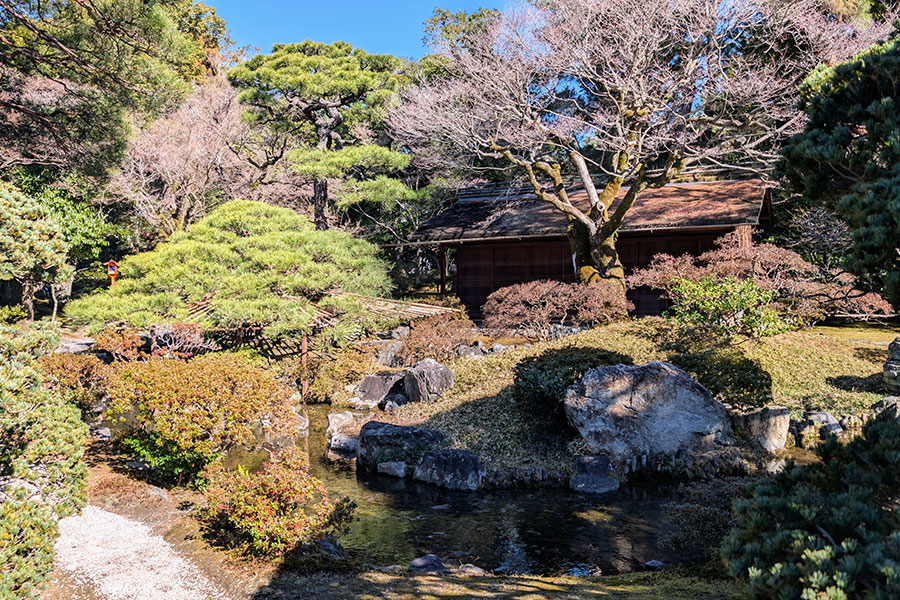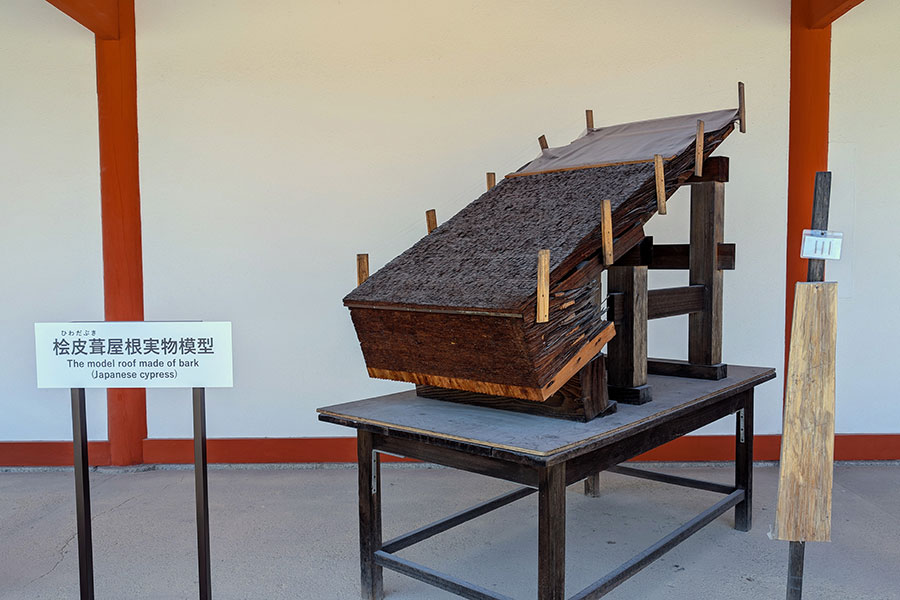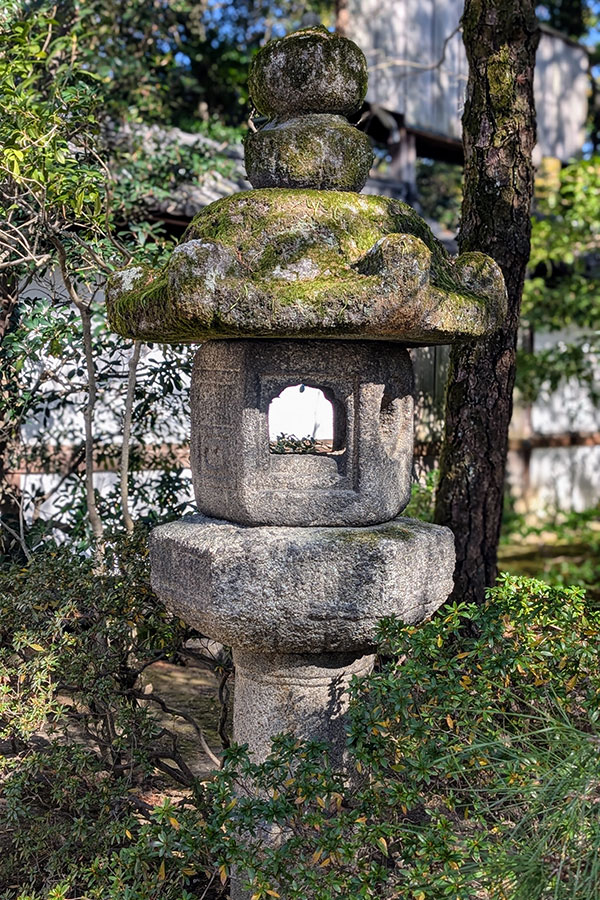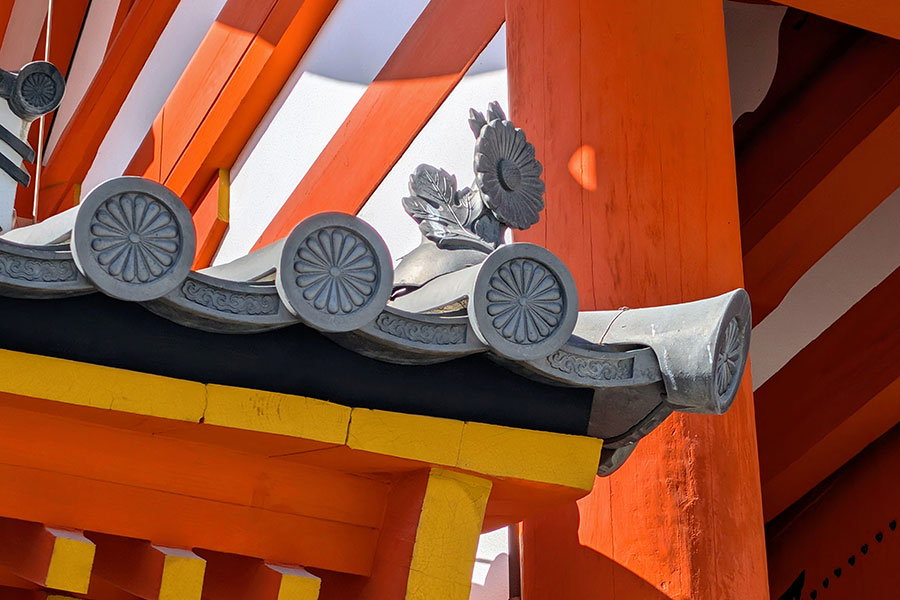On a bright and sunny, albeit chilly, Saturday afternoon in mid-January, as part of a larger trip across Japan, I found the Kyoto Imperial Palace rather empty. It was a surprising turn of events after I had encountered crowds of tourists spilling off the sidewalks in Arashiyama and flooding through the red tori gates at Fushimi Inari Shrine. Discovering a major landmark without the crowds is one of the surprising benefits of visiting Japan in winter.
Located within Kyoto Gyoen National Garden (京都御苑), Kyoto Imperial Palace (known today in Japanese as 京都御所, or Kyoto-Gosho, and historically as Dairi) served for more than 600 years as the emperor’s palace while the city was the country’s capital. While some buildings have been lost to time and war, the palace is partially restored and it’s one of the things to do in Kyoto that you won’t want to miss. (And it’s free!)
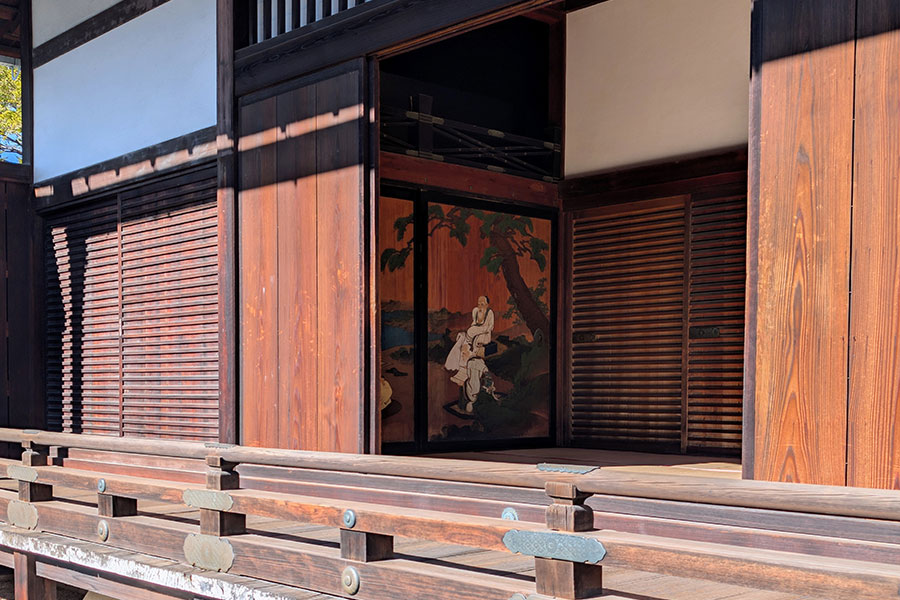
A Brief History of the Kyoto Imperial Palace
From Kyoto Gosho to Tokyo: The Imperial Family’s Move
The history of the Kyoto Imperial Palace goes back to 794, when the Imperial Residence was set up in the newly established capital by Emperor Kanmu. Kyoto, then known as Heian-kyo, retained this distinction until the start of the Meiji Restoration in 1868, when the capital moved to Tokyo, then known as Edo.
With this move, the emperor left the Kyoto-Gosho and took up residence in the new Tokyo Imperial Palace (皇居), which was built on the site of the former Edo Castle.
After several fires, in 1331, the Kyoto Gosho was promoted, so to speak, to be the emperor’s residence after the ascension of Emperor Kogon. It had previously served as a temporary residence and is a couple of kilometers away from the original palace.
Architecture & Cultural Significance
Within the complex, there are more than 25 buildings. Among the buildings, the most culturally important is the Shishinden (Hall for State Ceremonies). The hall served as the venue for the Enthronement Ceremonies of Emperors Meiji (1868), Taisho (1912), and Showa (1926). The thrones used by the emperor (Takamikura) and empress (Michodai) are housed inside the hall.
The Kyoto Gosho remains an important part of Japanese culture. The Emperor and Empress still hold court events on the grounds.
Architecturally, the palace embraced traditional Japanese aesthetics and building techniques. There are cypress bark roofs and seemingly understated unpainted woodwork. Inside, the buildings feature lavish murals and furnishings.
Exploring the Kyoto Imperial Palace Grounds and Gardens
It’s important to know that the Kyoto Imperial Palace is the walled-off complex located within the much larger Kyoto Gyoen National Garden, which serves as a public park. The park is deceptively modest considering it’s home to the walled Kyoto Imperial Palace complex, in the northwest part of the park. But once you get into the park and then within the palace walls, the complex is remarkable: the scale of the buildings is breathtaking and walking through the countless imposing gates is memorable.
Kyoto Imperial Palace Gardens and Seasonal Beauty
My favorite part of a Japanese garden is that it’s designed to look beautiful year-round. The palace contains seven gardens. There are formal, manicured gardens with bridges and ponds for strolling that you might expect, as well as stone or Zen gardens.
The more formal gardens are where you’ll find carefully cared-for plants that change with the seasons. In particular, crape myrtles bloom in the summer at Oike-niwa Pond Garden, and cherry blossoms can be seen in the spring at Odaidokoro-ato (Site of Kitchen Buildings).
Unfortunately, visitors aren’t allowed to get close to many of the buildings and gardens. Even though visitors can’t enter the gardens, I found them incredibly lovely to admire from the paths.
Kyoto Imperial Palace Park (Kyoto Gyoen)
At more than 160 acres, the Kyoto Imperial Palace Park is also known as Kyoto Gyoen National Garden. When the capital was moved to Edo, the residences of nobles on the periphery of the palace were essentially abandoned. Emperor Meiji proposed the idea of preserving the land by turning it into a garden. In total, it took 15 years for the project to be completed.
Following World War II, the land was recognized as a National Garden for the enjoyment and recreation of people in everyday life. Today, the park has a children’s playground and sports areas, as well as a lawn and tree-lined paths for strolling. The park also has numerous gardens.
Kyoto Imperial Palace Tours & Entrance Fee
As a tourist, the palace is the kind of place I love to visit: there is no admission fee, no pre-registration needed, and they have a great self-guided tour.
Kyoto Imperial Palace Entrance Fee and Access Rules
Entrance to the palace is free and no tickets are required. Simply show up at the palace to enter. Because of the importance of the site, there is a security check, but it is very quick.
How to Book a Kyoto Imperial Palace Tour
There is no need to book an Imperial Palace Kyoto tour in advance. The palace offers both self-guided and official guided tours for free.
The self-guided tour has an audio guide that can be downloaded to your phone. While there are signs providing information at the buildings, I really enjoyed how informative and easy to access the audio guide was. The audio guide is available in Japanese, English, Chinese, Korean, French, and Spanish.
If you’d prefer to take a guided tour, the palace offers free tours in Japanese, English, and Chinese at set times. As of writing, the Japanese tour is offered at 9:30 am, 10:30, 1:30 pm, and 2:30 pm; English and Chinese are both offered at 10 am and 2 pm. The guided tour is free and no advance registration is required; simply gather in the visitor’s center at the tour’s set start time.
Kyoto Imperial Palace Opening Hours and Visitor Information
Kyoto Imperial Palace Opening Hours
The Kyoto Imperial Palace is open Tuesday through Sunday. The palace is closed on Mondays, but if a national holiday falls on a Monday, it will be open with closure on that Tuesday.
The opening hours vary depending on the time of year. From April through August, the palace is open from 9 am to 5 pm, with final entry at 4:20 pm; from September through March, 9 am to 4:30 pm, with final entry at 3:50 pm; and from October through February, 9 am to 4 pm, with final entry at 3:20 pm.
Because the palace is still used for official functions, there may be unexpected closures for events. The palace may also close due to inclement weather.
Getting to the Kyoto Imperial Palace (Transport & Stations)
Using public transit, the palace can be easily accessed after a brief walk from either the Imadegawa Station on the Karasuma subway line or the Karasuma Imadegawa bus stop.
How Long to Spend at the Palace
It takes about an hour to visit the palace, but you can easily spend more or less time depending on your level of interest.
Is the Kyoto Imperial Palace Worth Visiting?
Yes, the Kyoto Imperial Palace is worth visiting. With its free admission and important history and architecture, it’s worth exploring even if just briefly.
Why the Palace is a Must-Do in Kyoto
I personally found the buildings remarkably impressive and fun to take photos of, as they spread out and aren’t sandwiched between modern buildings. And although visitors can’t enter the gardens, they are still extremely lovely to enjoy from afar.
Who Will Enjoy the Palace Most
Visitors looking to immerse themselves in Japanese history will truly appreciate the Kyoto Gosho complex, as will those looking to appreciate traditional Japanese buildings.
Nearby Attractions and Places to Eat
The park is in the heart of Kyoto with plenty of restaurants and nearby attractions. I especially recommend Ippodo Tea, whose flagship location has an incredible tearoom as well as a shop full of their high-quality teas.
Kyoto Imperial Palace FAQs
Is the Kyoto Imperial Palace free?
Yes, entrance to the palace is completely free, and no tickets are required.
Do you need to book a tour for the Kyoto Imperial Palace?
No, advance booking is not necessary. The palace offers free guided tours at set times and a self-guided audio tour that you can download to your phone.
What are the opening hours for the Kyoto Imperial Palace?
The opening hours vary depending on the time of year. From April to August, it’s open 9 am to 5 pm; from September to March, it’s 9 am to 4:30 pm; and from October to February, it’s 9 am to 4 pm. The palace is closed on Mondays.
Is the Kyoto Imperial Palace worth visiting?
Yes, the palace is worth visiting due to its important history, impressive architecture, and free admission.
How long does it take to visit the Kyoto Imperial Palace?
It takes about an hour to visit the palace, but you can spend more or less time depending on your interest.
Add the Kyoto Imperial Palace to Your Must-Do Kyoto List
From its centuries of history to its stunning traditional architecture, the Kyoto Imperial Palace is an unforgettable stop. While other attractions may have bustling crowds, the palace offers a refreshingly peaceful opportunity to step back in time. Because it’s completely free and requires no advance booking, it’s one of the easiest and most rewarding historical sites to visit in the city.
All photos and opinions are my own.
